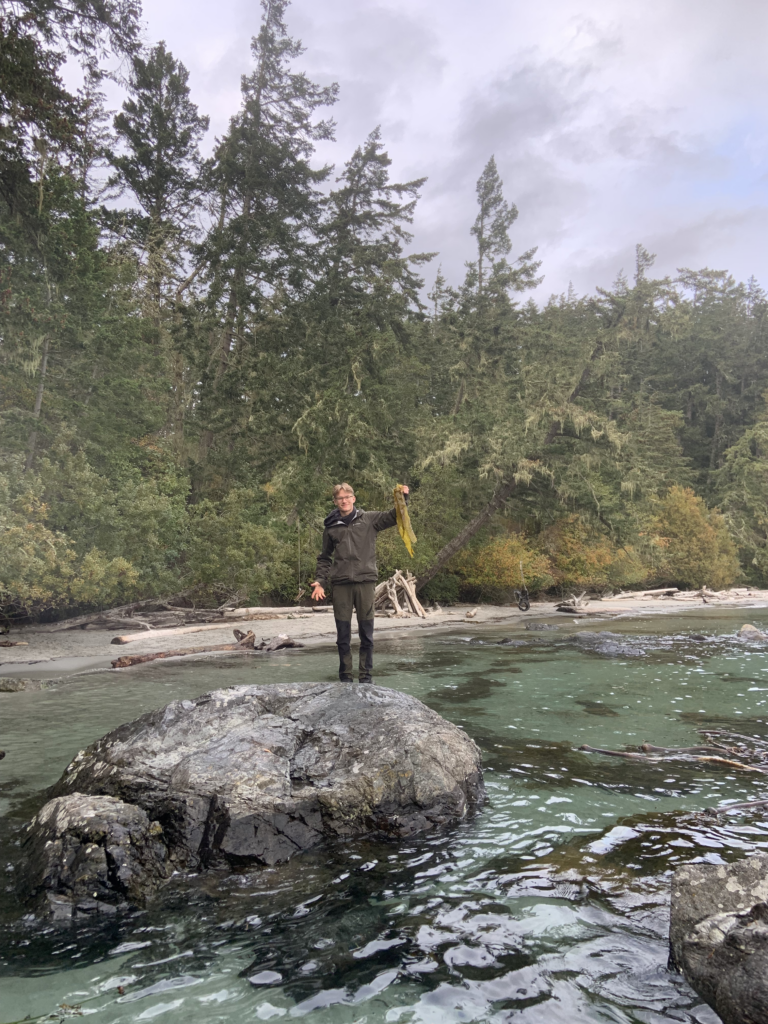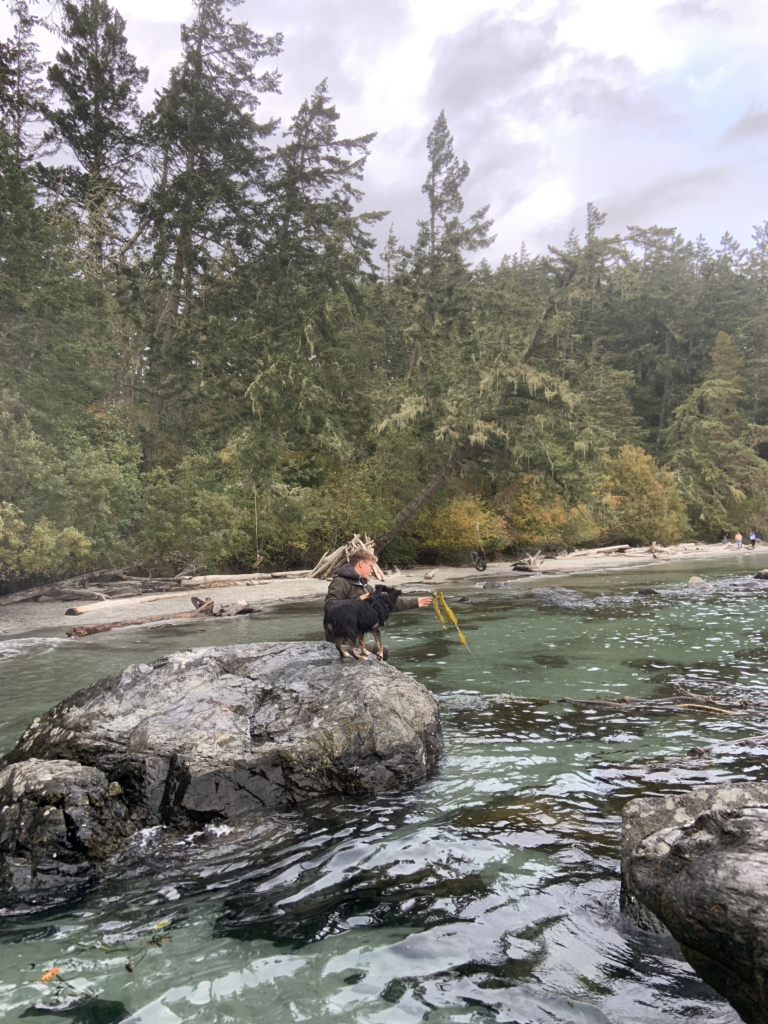₭O¸EṈ¸(*) otherwise known as Bull kelp, is Indigenous to the Pacific Northwest and has played a particularly prominent role in traditional subsistence knowledge and technology. It was often used to create tools like fishing hooks and bows, and its stipes were twisted and cured for making durable fishing and anchor lines. ₭O¸EṈ¸ supports diverse marine life and plays a crucial role in the food web; kelp forests provide habitats and resources that have sustained Indigenous communities for generations. ₭O¸EṈ¸ was traditionally used in reef net fishing — a method used by the Lummi, Samish, and other Straits Salish groups to catch salmon. Fishermen would set up nets anchored with ₭O¸EṈ¸ to create a barrier that directed fish into the nets as they swam.
In addition to subsistence and technology, the practical applications of kelp are varied and significant. ₭O¸EṈ¸ was known to be used as a garden hose, refrigerator, steamer, and fertilizer. It also has medicinal purposes and was used to address iodine deficiency. ₭O¸EṈ¸ was used in cultural activities, from ceremonial performances to games and toys for children (Ex. target practice, musical instruments, basketry). It also played an important role in symbolic and spiritual aspects of traditional Northwest Coast cultures and was often associated with powerful beings in Indigenous mythology. ₭O¸EṈ¸ connects various realms: the surface and underwater, continents, land and sea, and human and supernatural worlds.
As a complete source of minerals (iodine, potassium & magnesium) and protein, ₭O¸EṈ¸ is entirely edible and has been harvested by peoples for millennia. It can be prepared and consumed in various ways — can be dried, cooked, steamed, pickled etc. This week, I decided to make some kelp chips! I’ve included some photos of my partner harvesting some kelp blades from East Sooke Park, and our process of making the chips!
Step 1: Harvest kelp blades with paring knife


Step 2: Rinse kelp with cold water
Step 3: Soak kelp in cold water for ten minutes
Step 4: Drizzle kelp with olive oil (and we added garlic powder)
Step 5: Dry roast them on baking sheet at 200°C until brown & crispy
My sources:
- https://nwstraits.org/media/2925/appendix_b_the-cultural-importance-of-kelp-for-pacific-northwest-tribes.pdf
- https://seaweedmermaid.com/2021/09/04/bullwhip-kelp/#:~:text=A%20complete%20source%20of%20trace,harvested%20by%20humans%20for%20millennia.
- https://www.theseamossharvest.com/blogs/news/is-bull-kelp-edible
- https://www.uaf.edu/ces/publications/database/food/bullwhip-kelp.php#:~:text=Bullwhip%20kelp%20is%20easily%20recognized,the%20blades%20are%20all%20edible.
- https://www.bbcgoodfood.com/user/393629/recipe/kelp-seaweed-crisps
- https://bullkelp.info/characters/humans#:~:text=Humans%20have%20used%20bull%20kelp,for%20habitat%20and%20 juvenile%20development.
(*) ₭O¸EṈ¸ is SENĆOŦEN, a dialect spoken by the Coast Salish peoples.